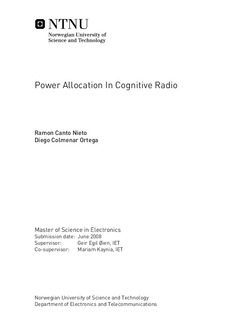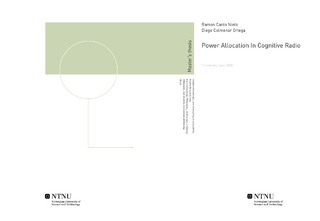| dc.description.abstract | One of the major challenges in design of wireless networks is the use of the frequency spectrum. Numerous studies on spectrum utilization show that 70% of the allocated spectrum is in fact not utilized. This guides researchers to think about better ways for using the spectrum, giving rise to the concept of Cognitive Radio (CR). Maybe one of the main goals when designing a CR system is to achieve the best way of deciding when a user should be active and when not. In this thesis, the performance of Binary Power Allocation protocol is deeply analyzed under different conditions for a defined network. The main metric used is probability of outage, studying the behavior of the system for a wide range of values for different transmission parameters such as rate, outage probability constraints, protection radius, power ratio and maximum transmission power. All the studies will be performed with a network in which we have only one Primary User for each cell, communicating with a Base Station. This user will share this cell with N potential secondary users, randomly distributed in space, communicating with their respective secondary receivers, from which only M will be allowed to transmit according to the Binary Control Power protocol. In order to widely analyze the system and guide the reader to a better comprehension of its behavior, different considerations are taken. Firstly an ideal model with no error in the channel information acquisition and random switching off of the user is presented. Secondly, we will try to improve the behavior of the system by developing some different methods in the decision of dropping a user when it is resulting harmful for the primary user communication. Besides this, more realistic approaches of the channel state information are performed, including Log-normal and Gaussian error distributions. Methods and modifications used to reach the obtained analytical results are presented in detail, and these results are followed by simulation performances. Some results that do not accord with theoretical expectations are also presented and commented, in order to open further ways of developing and researching. | nb_NO |

